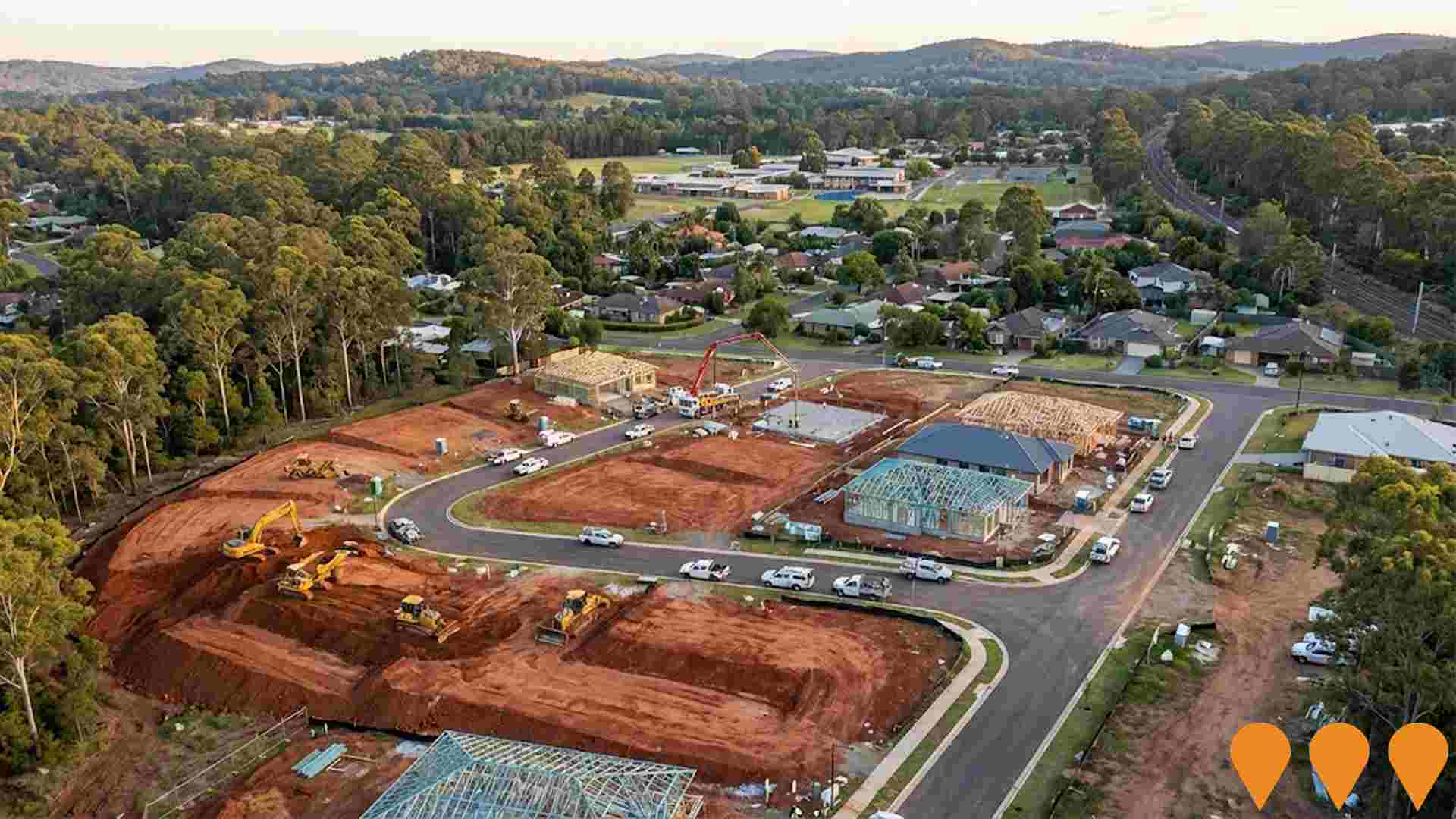Chart Color Schemes
est. as @ -- *
ABS ERP | -- people | --
2021 Census | -- people
Sales Activity
Curious about local property values? Filter the chart to assess the volume and appreciation (including resales) trends and regional comparisons, or scroll to the map below view this information at an individual property level.
Find a Recent Sale
Sales Detail
Population
Niagara Park - Lisarow is positioned among the lower quartile of areas assessed nationally for population growth based on AreaSearch's assessment of recent, and medium term trends
Niagara Park - Lisarow's population is approximately 8,276 as of August 2025. This figure represents an increase of 71 people since the 2021 Census, which recorded a population of 8,205. The growth is inferred from the estimated resident population of 8,271 in June 2024 and an additional 9 validated new addresses since the Census date. This results in a population density ratio of 494 persons per square kilometer. Niagara Park - Lisarow's 0.9% growth positions it within 1.4 percentage points of the SA3 area (2.3%), indicating competitive growth fundamentals. Overseas migration contributed approximately 63.6% of overall population gains during recent periods.
AreaSearch uses ABS/Geoscience Australia projections for each SA2 area, released in 2024 with a base year of 2022. For areas not covered by this data, AreaSearch utilises NSW State Government's SA2 level projections, released in 2022 with a base year of 2021. Growth rates by age group from these aggregations are applied to all areas for years 2032 to 2041. By 2041, the area's population is projected to decline by 43 persons overall. However, specific age cohorts are anticipated to grow, with the 75 to 84 age group expected to increase by 199 people.
Frequently Asked Questions - Population
Development
The level of residential development activity in Niagara Park - Lisarow is very low in comparison to the average area assessed nationally by AreaSearch
Niagara Park - Lisarow has seen approximately 12 dwellings granted development approval annually. Over the past five financial years, from FY-21 to FY-25, 62 homes have been approved, with a further 3 approved in FY-26 so far. On average, about 0.4 people per year move to the area for each dwelling built over these five years.
This suggests that new construction is keeping pace with or even exceeding demand, providing more options for buyers and facilitating population growth beyond current expectations. The average expected construction cost of new properties in the area is $319,000, which is below regional norms, indicating more affordable housing options. In FY-26, there have been $23.8 million in commercial approvals, demonstrating steady commercial investment activity. Compared to Greater Sydney, Niagara Park - Lisarow has significantly lower building activity, at 60.0% below the regional average per person. This limited new supply generally supports stronger demand and values for established properties.
Nationally, this figure is also below average, reflecting the area's maturity and possible planning constraints. Recent building activity consists solely of detached houses, maintaining the area's traditional low-density character with a focus on family homes that appeal to those seeking space. This preference for detached housing (84.0% at Census) indicates robust demand for family homes despite increasing density pressures. The estimated population count per dwelling approval in the area is 2754 people, reflecting its quiet and low-activity development environment. Population projections suggest stability or decline, which should lead to reduced housing demand pressures, benefiting potential buyers.
Frequently Asked Questions - Development
Infrastructure
Niagara Park - Lisarow has strong levels of nearby infrastructure activity, ranking in the top 40% nationally
Changes to local infrastructure significantly impact an area's performance. AreaSearch identified 14 projects likely affecting the region. Notable initiatives include Narara Ecovillage, Narara District Master Plan, Wyoming Shopping Village Upgrade, and Narara Community Centre and Library Redevelopment. The following list details those expected to have the most relevance.
Professional plan users can use the search below to filter and access additional projects.
INFRASTRUCTURE SEARCH
 Denotes AI-based impression for illustrative purposes only, not to be taken as definitive under any circumstances. Please follow links and conduct other investigations from the project's source for actual imagery. Developers and project owners wishing us to use original imagery please Contact Us and we will do so.
Denotes AI-based impression for illustrative purposes only, not to be taken as definitive under any circumstances. Please follow links and conduct other investigations from the project's source for actual imagery. Developers and project owners wishing us to use original imagery please Contact Us and we will do so.
Frequently Asked Questions - Infrastructure
Gosford Hospital Redevelopment
Major $348 million hospital redevelopment featuring new 11-storey clinical services building, new front entrance, expanded emergency department, intensive care unit, birthing suite, maternity ward, rehabilitation unit, and cardiac catheterization labs. Teaching hospital affiliated with University of Newcastle with modern patient accommodation facilities and upgraded operating theatres.

Wyoming Shopping Village Upgrade
Upgrade and enhancement of the neighbourhood shopping centre, anchored by Coles, with a tailored tenancy mix focused on health, beauty, food, and beverage services. Planning is complete for the centre upgrade.
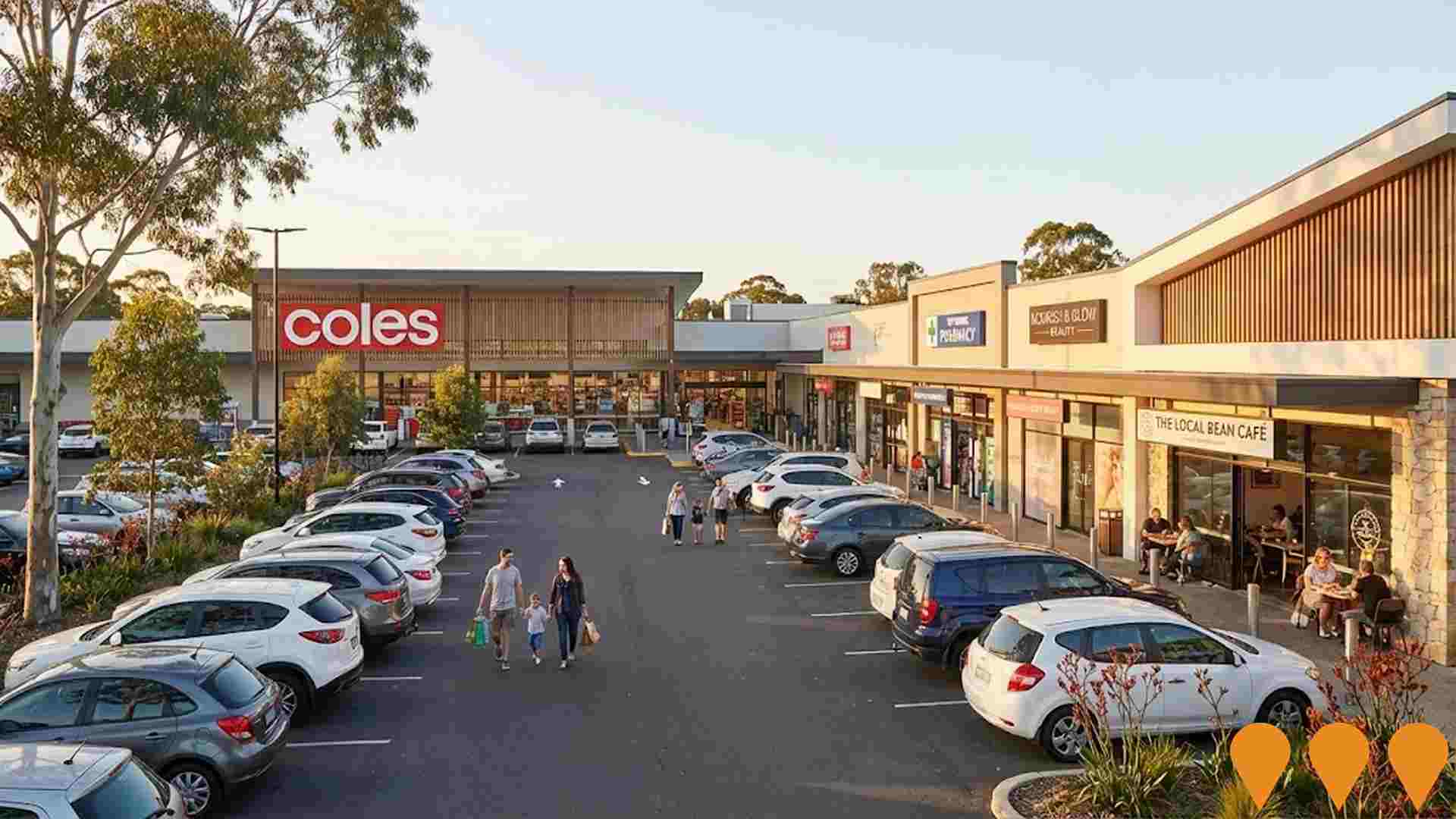
Narara District Master Plan
Development and delivery of master plans for the Narara District including Lisarow, Wyoming, and Niagara Park to support housing and urban development. The district is within the Central Coast Council local government area.

Narara Community Centre and Library Redevelopment
Concept plan by Central Coast Council to upgrade and expand the existing Narara Community Centre, with the potential to integrate a small branch library and co-located community services. The intent is to modernise internal spaces, improve accessibility and flexibility for programs, and strengthen the role of the centre as a local hub for support services, activities and learning. As at late 2025 there is no publicly advertised development application or construction program specific to the building redevelopment, although the site has recently benefited from other investments such as a rooftop solar array and community battery delivered with Ausgrid.
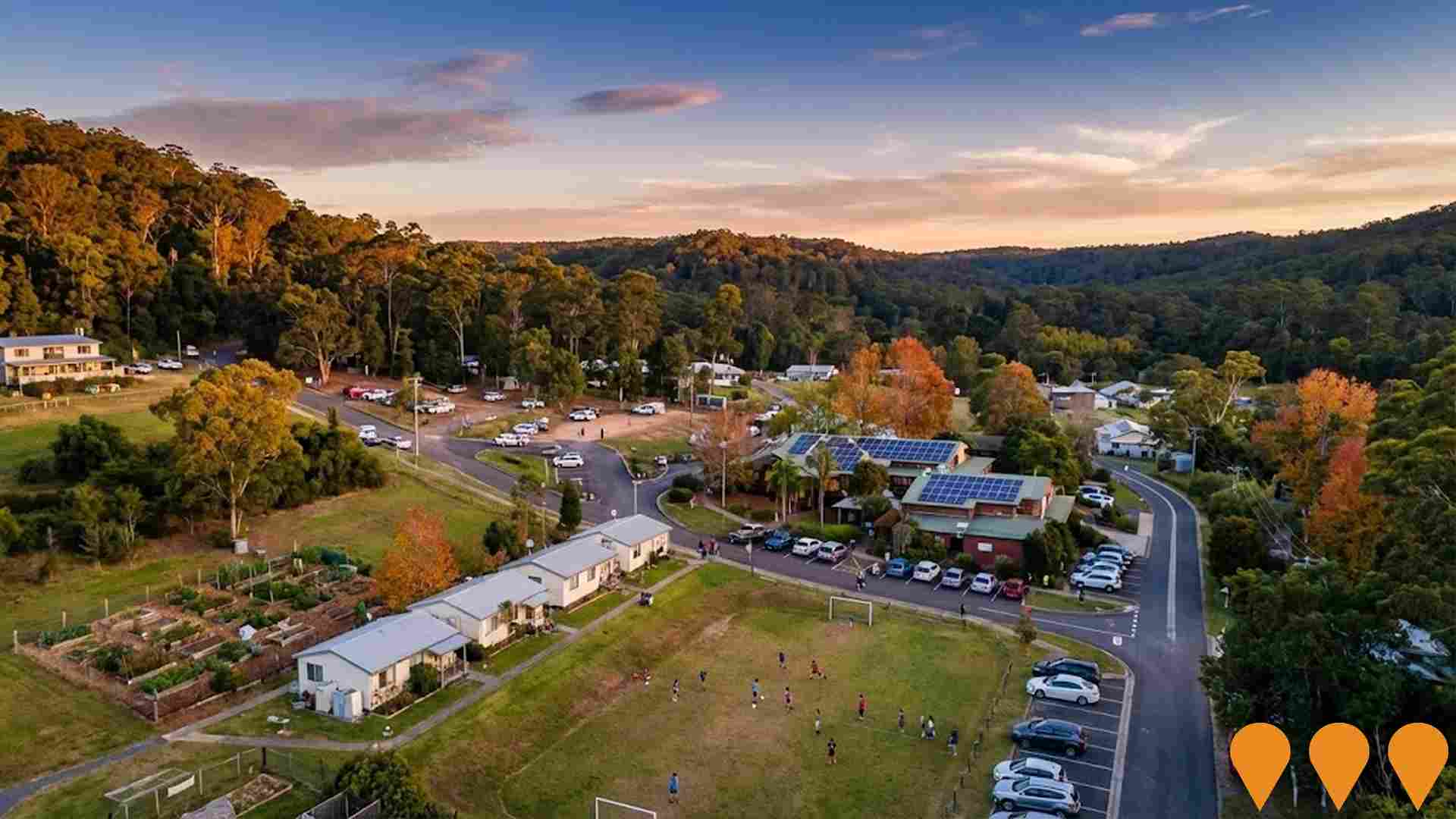
The Outlook Narara
The Outlook Narara is a completed master planned over 55s lifestyle resort on the NSW Central Coast, comprising 178 independent living units delivered in stages between 2020 and 2023. The gated community provides resort style communal facilities and a residents clubhouse, offering low maintenance living for retirees close to Gosford services, shops and public transport. The village is now operating as an established over 55s community with ongoing lifestyle and management services in place.
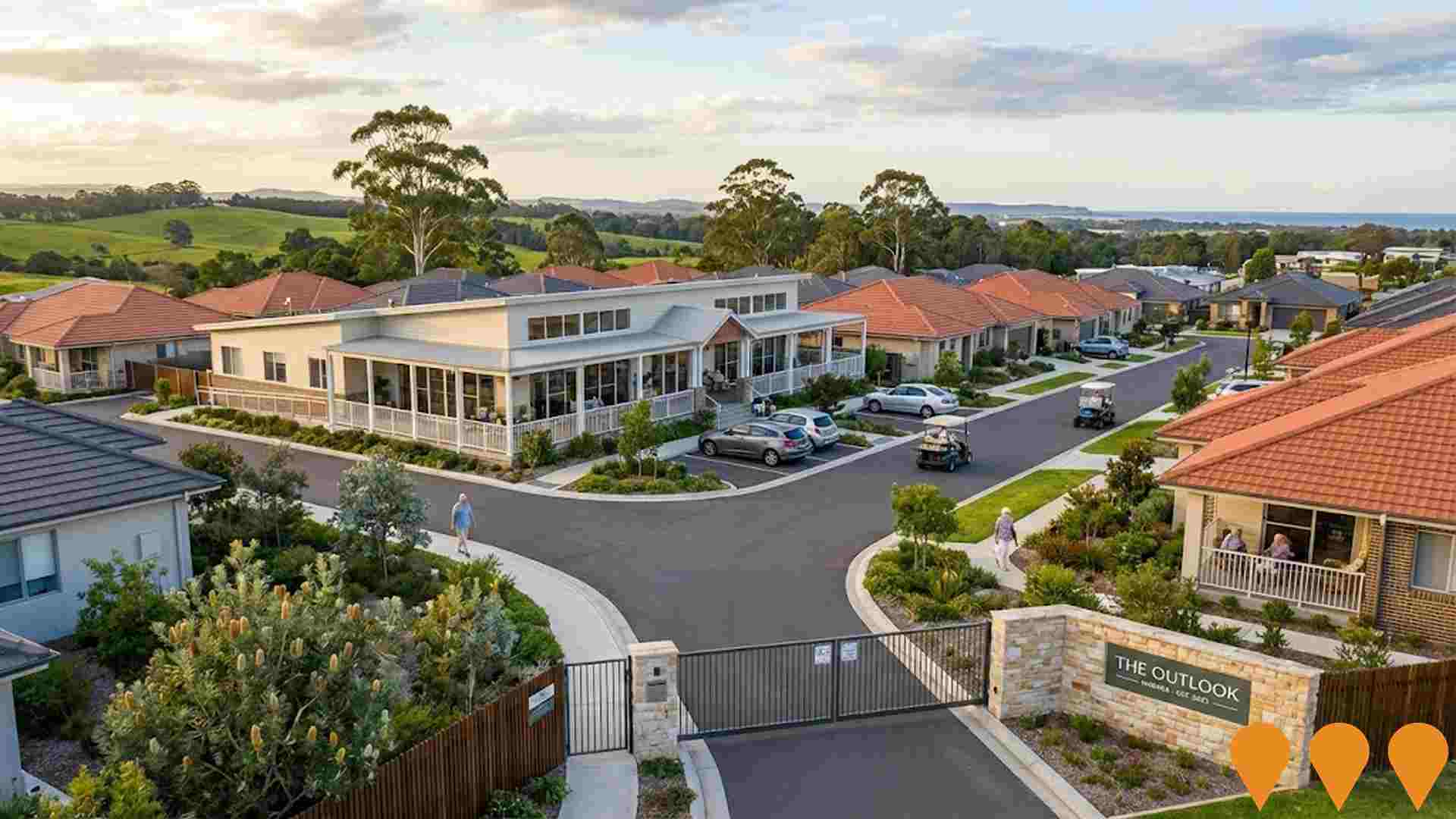
Narara Ecovillage
Narara Ecovillage is a 64 hectare community title eco housing development on the former Gosford horticultural research station at Narara, planned for around 150 low impact homes plus shared community facilities, food growing spaces and integrated energy and water infrastructure. Stage 1 is largely complete and occupied, while Stage 2 civil works finished at the end of 2023 with most of the 40 plus new lots sold, owners preparing development applications and a growing number of homes under construction or already occupied; a planning proposal and amended planning agreement are progressing to support a future Stage 3 with more diverse housing types and small scale local services. :contentReference[oaicite:0]{index=0} :contentReference[oaicite:1]{index=1} :contentReference[oaicite:2]{index=2}

Telecommunications Mobile Base Station
Development Application (DA/1244/2025) submitted to Central Coast Council by Amplitel Pty Ltd for the construction of a new telecommunications mobile base station at 172 Glennie St, Wyoming. The project aims to improve network coverage in the area. Written submissions on the application close on 20 October 2025.
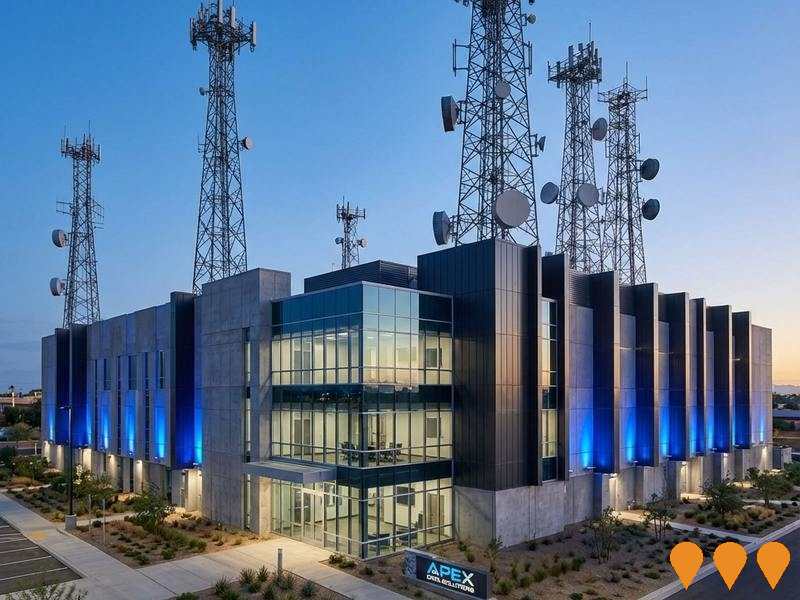
M1 Pacific Motorway Kariong to Somersby Widening
Widening of M1 Pacific Motorway between Kariong and Somersby interchanges to improve traffic flow and reduce congestion on this critical corridor between Sydney and Newcastle.
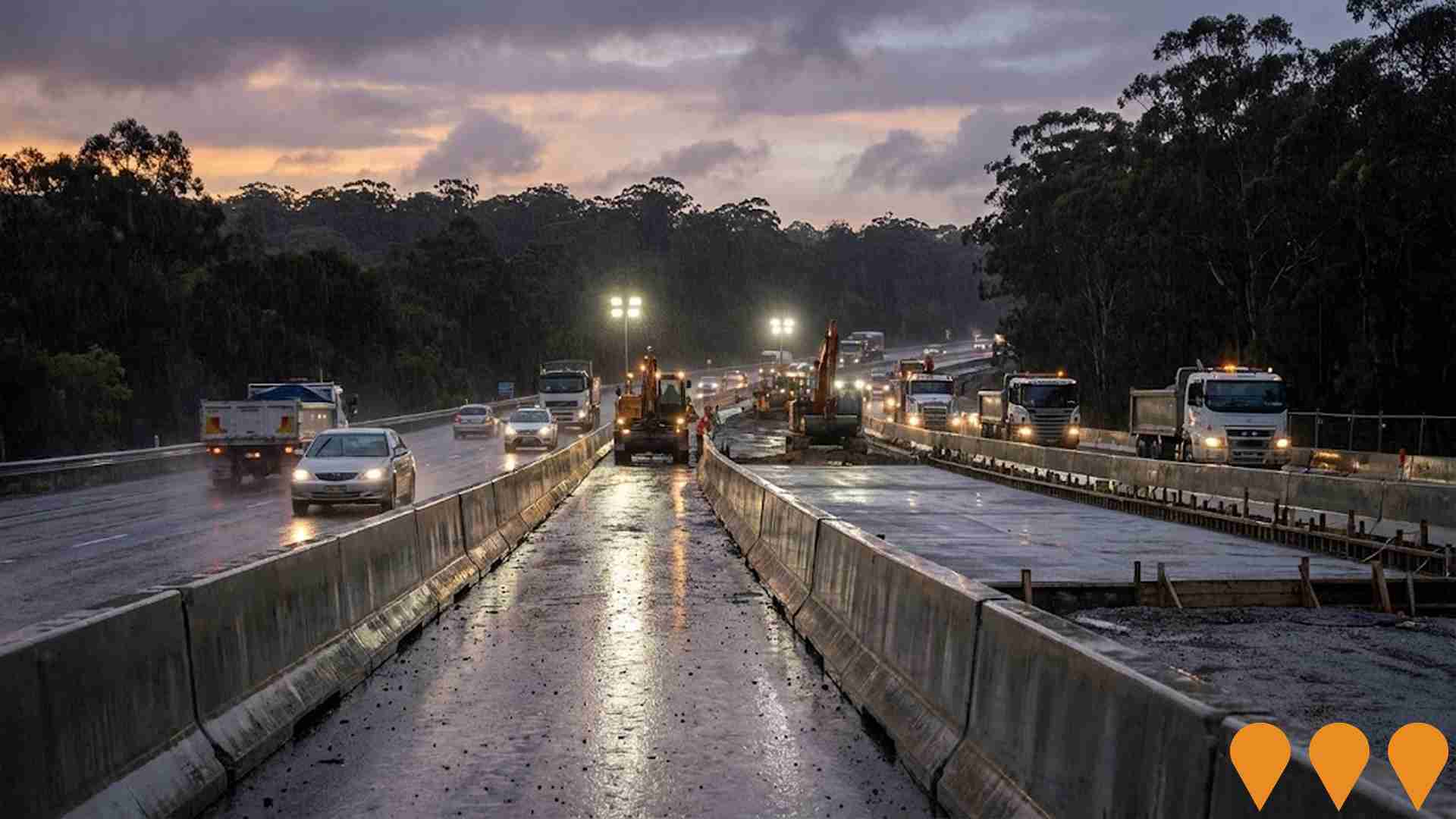
Employment
The labour market strength in Niagara Park - Lisarow positions it well ahead of most Australian regions
Niagara Park - Lisarow has an unemployment rate of 2.0% as of June 2025, with estimated employment growth of 2.8% in the past year. The area's workforce participation is 63.9%, compared to Greater Sydney's 60.0%.
Key industries include health care & social assistance, retail trade, and construction. Health care & social assistance has a strong presence, with an employment share 1.3 times the regional level. Professional & technical services have limited presence at 6.9% compared to the regional figure of 11.5%. Employment opportunities may be limited locally, as indicated by Census data showing fewer working residents than expected based on population.
Over a 12-month period ending in June 2025, employment increased by 2.8%, while labour force grew by 2.7%, keeping unemployment broadly flat at 2.2%. In comparison, Greater Sydney saw employment growth of 2.6% and labour force growth of 2.9%, with unemployment rising slightly to 4.2%. Jobs and Skills Australia's national employment forecasts from May 2025 project overall employment growth of 6.6% over five years and 13.7% over ten years. Applying these projections to Niagara Park - Lisarow's industry mix suggests local growth of approximately 6.6%% over five years and 13.8% over ten years, though these figures are illustrative extrapolations and do not account for localized population projections.
Frequently Asked Questions - Employment
Income
The economic profile demonstrates above-average performance, with income metrics exceeding national benchmarks based on AreaSearch comparative assessment
AreaSearch's latest postcode level ATO data for financial year 2022 shows Niagara Park - Lisarow had a median income among taxpayers of $51,783 and an average of $66,919. This is slightly above the national average. In comparison, Greater Sydney had a median income of $56,994 and an average of $80,856. Based on Wage Price Index growth of 12.61% since financial year 2022, current estimates for Niagara Park - Lisarow would be approximately $58,313 (median) and $75,357 (average) as of September 2025. Census data indicates household income ranks at the 65th percentile ($1,987 weekly), while personal income sits at the 49th percentile. Income analysis reveals that 33.7% of locals (2,789 people) fall within the $1,500 - 2,999 income category. This is similar to the surrounding region where 30.9% of residents occupy this range. High housing costs consume 15.3% of income. Despite this, disposable income ranks at the 66th percentile. The area's SEIFA income ranking places it in the 6th decile.
Frequently Asked Questions - Income
Housing
Niagara Park - Lisarow is characterized by a predominantly suburban housing profile, with ownership patterns similar to the broader region
Niagara Park - Lisarow dwelling structure as per latest Census data showed 84.5% houses and 15.4% other dwellings (semi-detached, apartments, 'other' dwellings), compared to Sydney metro's 74.2% houses and 25.9% other dwellings. Home ownership in Niagara Park - Lisarow was at 32.8%, with mortgaged dwellings at 49.3% and rented ones at 18.0%. Median monthly mortgage repayment in the area was $2,000, below Sydney metro's average of $2,150. Median weekly rent figure was $425, compared to Sydney metro's $400. Nationally, Niagara Park - Lisarow's median monthly mortgage repayments were higher at $2,000 than the Australian average of $1,863, while rents were substantially above the national figure of $375.
Frequently Asked Questions - Housing
Household Composition
Niagara Park - Lisarow features high concentrations of family households, with a higher-than-average median household size
Family households account for 79.2% of all households, including 40.5% couples with children, 25.1% couples without children, and 12.9% single parent families. Non-family households constitute the remaining 20.8%, with lone person households making up 18.5% and group households comprising 2.2%. The median household size is 2.8 people, which is larger than the Greater Sydney average of 2.5.
Frequently Asked Questions - Households
Local Schools & Education
Niagara Park - Lisarow performs slightly above the national average for education, showing competitive qualification levels and steady academic outcomes
The area faces educational challenges, with university qualification rates at 23.4%, significantly lower than Greater Sydney's average of 38.0%. Bachelor degrees are the most common at 16.4%, followed by postgraduate qualifications (4.8%) and graduate diplomas (2.2%). Vocational credentials are prevalent among residents aged 15+, with 40.0% holding such qualifications, including advanced diplomas (11.9%) and certificates (28.1%). Educational participation is high, with 30.5% of residents currently enrolled in formal education, broken down into primary (10.3%), secondary (9.2%), and tertiary (4.5%) levels.
Niagara Park - Lisarow has 4 schools serving a combined enrollment of 1,779 students, indicating typical Australian school conditions with balanced educational opportunities. The area is well-provisioned for education, with 3 primary and 1 secondary school serving distinct age groups, and a higher capacity to resident ratio (21.5 places per 100 residents vs the regional average of 15.9), suggesting it serves as an educational hub for the broader region.
Frequently Asked Questions - Education
Schools Detail
Nearby Services & Amenities
Transport
Transport servicing is moderate compared to other areas nationally based on assessment of service frequency, route connectivity and accessibility
Niagara Park - Lisarow has 54 active public transport stops offering a mix of train and bus services. These stops are served by 48 individual routes, collectively facilitating 1,390 weekly passenger trips. Transport accessibility is rated good with residents located an average of 281 meters from the nearest stop.
Service frequency averages 198 trips per day across all routes, equating to approximately 25 weekly trips per individual stop.
Frequently Asked Questions - Transport
Transport Stops Detail
Health
Health performance in Niagara Park - Lisarow is lower than average with common health conditions somewhat prevalent across the board, though to a slightly higher degree among older age cohorts
Niagara Park - Lisarow faces significant health challenges with common health conditions prevalent across various age groups, particularly among older cohorts. Approximately 52% of its total population (~4,336 people) has private health cover, slightly higher than Greater Sydney's average of 54.7%.
Mental health issues and asthma are the most common medical conditions in the area, affecting 9.7% and 8.6% of residents respectively. Around 65.9% of residents report having no medical ailments, compared to 64.8% across Greater Sydney. The area has 17.1% of residents aged 65 and over (1,414 people), lower than Greater Sydney's 24.5%. Health outcomes among seniors require more attention due to the specific challenges they face.
Frequently Asked Questions - Health
Cultural Diversity
Niagara Park - Lisarow ranks below the Australian average when compared to other local markets across a number of language and cultural background related metrics
Niagara Park-Lisarow showed lower cultural diversity, with 82.9% born in Australia, 92.6% being citizens, and 92.8% speaking English only at home. Christianity dominated the religion landscape at 53.1%. Judaism was slightly overrepresented at 0.2%, compared to Greater Sydney's 0.2%.
The top ancestry groups were English (31.5%), Australian (29.2%), and Irish (8.4%). Notable differences existed for Welsh (0.7% vs regional 0.7%), Korean (0.4% vs 0.3%), and South African (0.5% vs 0.5%) groups.
Frequently Asked Questions - Diversity
Age
Niagara Park - Lisarow's population is slightly older than the national pattern
Niagara Park - Lisarow has a median age of 40, which is higher than Greater Sydney's figure of 37 and Australia's figure of 38 years. The 5-14 cohort is notably over-represented at 14.3% locally, while the 25-34 year-olds are under-represented at 9.6%. Since 2021, the 15 to 24 age group has grown from 12.7% to 14.0%, and the 75 to 84 cohort has increased from 4.5% to 5.8%. Conversely, the 25 to 34 cohort has declined from 10.7% to 9.6%. Demographic modeling suggests that by 2041, Niagara Park - Lisarow's age profile will evolve significantly. The 75 to 84 age cohort is projected to expand by 179 people (38%), from 477 to 657. Notably, the combined 65+ age groups are expected to account for 74% of total population growth, reflecting the area's aging demographic profile. Meanwhile, the 65 to 74 and 15 to 24 cohorts are expected to experience population declines.

